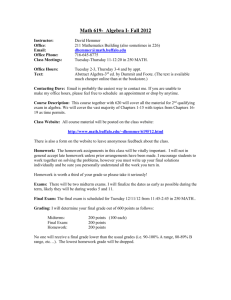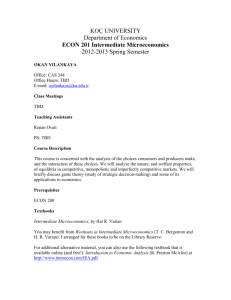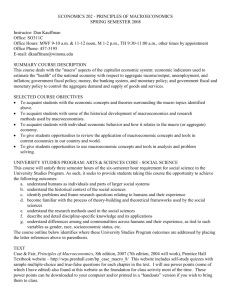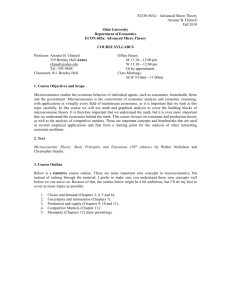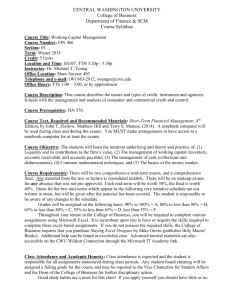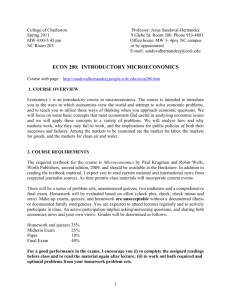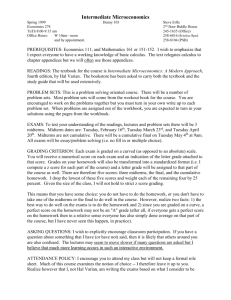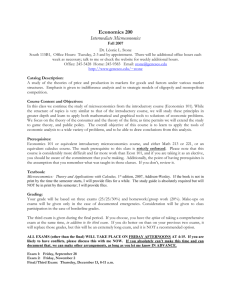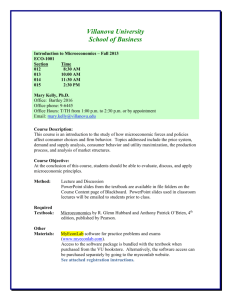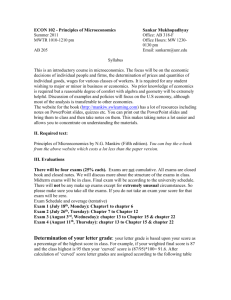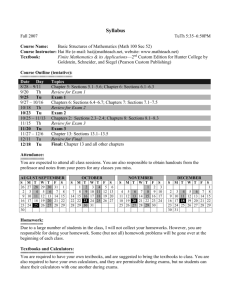Economics 201 - Principles of Microeconomics
advertisement
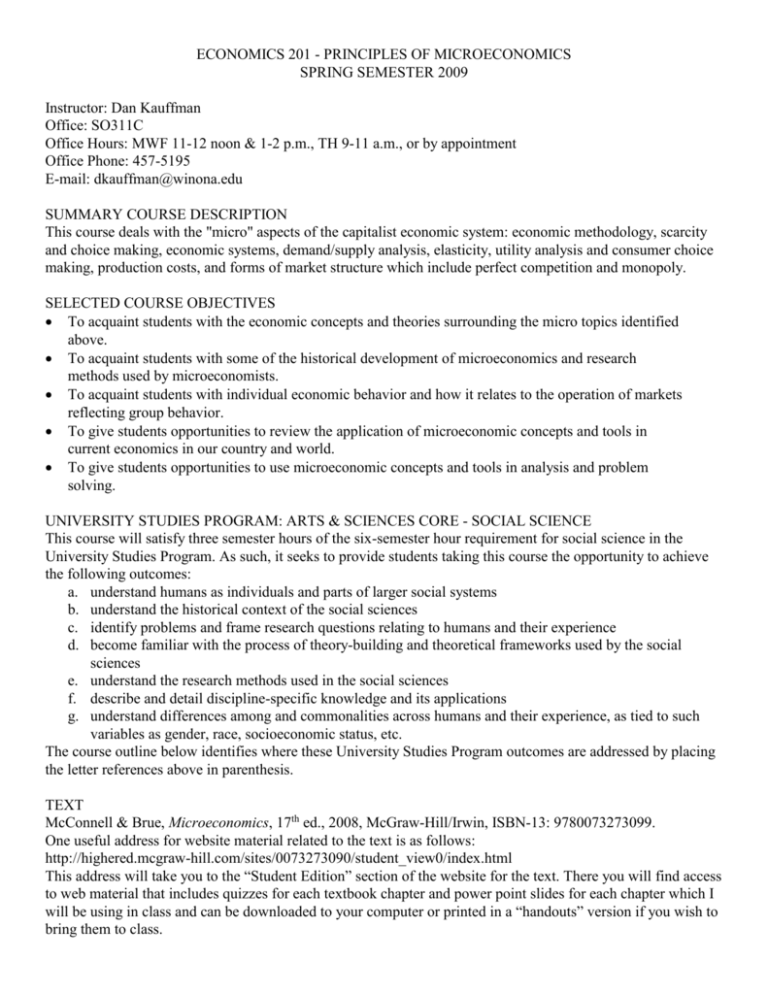
ECONOMICS 201 - PRINCIPLES OF MICROECONOMICS SPRING SEMESTER 2009 Instructor: Dan Kauffman Office: SO311C Office Hours: MWF 11-12 noon & 1-2 p.m., TH 9-11 a.m., or by appointment Office Phone: 457-5195 E-mail: dkauffman@winona.edu SUMMARY COURSE DESCRIPTION This course deals with the "micro" aspects of the capitalist economic system: economic methodology, scarcity and choice making, economic systems, demand/supply analysis, elasticity, utility analysis and consumer choice making, production costs, and forms of market structure which include perfect competition and monopoly. SELECTED COURSE OBJECTIVES To acquaint students with the economic concepts and theories surrounding the micro topics identified above. To acquaint students with some of the historical development of microeconomics and research methods used by microeconomists. To acquaint students with individual economic behavior and how it relates to the operation of markets reflecting group behavior. To give students opportunities to review the application of microeconomic concepts and tools in current economics in our country and world. To give students opportunities to use microeconomic concepts and tools in analysis and problem solving. UNIVERSITY STUDIES PROGRAM: ARTS & SCIENCES CORE - SOCIAL SCIENCE This course will satisfy three semester hours of the six-semester hour requirement for social science in the University Studies Program. As such, it seeks to provide students taking this course the opportunity to achieve the following outcomes: a. understand humans as individuals and parts of larger social systems b. understand the historical context of the social sciences c. identify problems and frame research questions relating to humans and their experience d. become familiar with the process of theory-building and theoretical frameworks used by the social sciences e. understand the research methods used in the social sciences f. describe and detail discipline-specific knowledge and its applications g. understand differences among and commonalities across humans and their experience, as tied to such variables as gender, race, socioeconomic status, etc. The course outline below identifies where these University Studies Program outcomes are addressed by placing the letter references above in parenthesis. TEXT McConnell & Brue, Microeconomics, 17th ed., 2008, McGraw-Hill/Irwin, ISBN-13: 9780073273099. One useful address for website material related to the text is as follows: http://highered.mcgraw-hill.com/sites/0073273090/student_view0/index.html This address will take you to the “Student Edition” section of the website for the text. There you will find access to web material that includes quizzes for each textbook chapter and power point slides for each chapter which I will be using in class and can be downloaded to your computer or printed in a “handouts” version if you wish to bring them to class. COURSE OUTLINE I. Introductory Economic Concepts and Models, including economic methodology, scarcity and choice making, comparative advantage, economic systems, and demand/supply analysis. (a, b, c, d, e, f, g) Chapters 1, 2, 5 (pp. 89-96) & 23 (pp. 442-448), 4 (pp. 71-75), 3 Exam 1 II. Elasticity, Utility Analysis, and Production Costs. (a, c, d, e, f, g) Chapters 6, 7, 8 Exam 2 III. Pure Competition and Pure Monopoly. (a, b, c, d, f) Chapters 9, 10 Exam 3 IV. Monopolistic Competition and Oligopoly, Technology, and Input Markets. (a, b, c, d, f) Chapters 11, 12, 13 Exam 4 EXAMS Initial plans (they could change so pay attention in class) are for four required unit exams as outlined above. Each exam will probably have 100 total points. Dates for Exams 1, 2, and 3 will be announced about a week ahead. Exam 4 (or the last unit exam if less than four unit exams are given) will be given during the scheduled final exam period. In addition there will likely be an optional 100 point re-exam (over material covered in exams given before the final exam period) also offered during the scheduled final exam period. The score on the optional re-exam (if taken) will replace the student's lowest score, if higher, of those exams given before the final exam period. Arrangements should be made to take any make-up exam before the original is given. Only in documented emergency situations will a make-up exam be given if arrangements have not been made before hand. GRADES On each exam, and for the course grade, the following percentages of total points will, at maximum, apply: 90 - 100% = A 80 - 89% = B 60 - 79% = C 50 - 59% = D Less than 50% = F ACADEMIC INTEGRITY POLICY Winona State students are required to adhere to WSU's standards of academic honesty. Cheating in any form, deception and misrepresentation of work presented, and plagiarism are a few examples of academic dishonesty. Information regarding this Student Conduct Policy can be found on the Student Affairs web site at the following address: http://www.winona.edu/studentaffairs/integrity_policy.htm A visit to that site would be advantageous.
